The Philips OLED909 is certainly an engineering showcase from the Dutch manufacturer for 2024. When it comes to picture quality, the television delivers what one can expect from OLED technology – deep blacks and infinite contrast. Additionally, it is equipped with META technology (MLA micro-lenses), which significantly enhances its brightness and further improves the already excellent viewing angles of organic matrix televisions. As a result, HDR effects look phenomenal, and the TV will satisfy most users looking for great picture quality in this class of devices. In terms of motion fluidity, the OLED909 does not disappoint either. The 144 Hz panel, combined with a full set of gaming features such as HDMI 2.1, ALLM, and VRR, makes it the perfect choice for gaming enthusiasts. Both dynamic shooters and spectacular racing games will look smooth and responsive. Regarding usability, the television features the Google TV operating system, just like the OLED809 model. This solution is significantly better than TitanOS, which is found in the lowest series OLED 769 from the Dutch manufacturer. It provides access to a vast number of applications, easy navigation, and support for voice assistants. Additionally, there is a four-sided Ambilight system that adds magic to every movie night, creating a unique atmosphere. However, it is not a device without flaws. The biggest issue regarding the picture is the average fluidity of tonal transitions – colour banding is visible in subtle gradients, which may disturb more discerning viewers. In the context of PC compatibility, although it is phenomenal hardware for gamers, it may not be the best choice for text or graphic work, due to the lack of 4:4:4 chroma support. In terms of usability, it is worth mentioning a few disappointments. We really liked the remote control in this model – it is well designed, and the backlit numeric keypad is a great addition, especially when using the television in the evening. Unfortunately, it mainly operates on infrared, so we found ourselves getting annoyed a few times when we had to aim precisely at the screen. This is a bit strange, considering that in this price range we expected more modern solutions. The lack of recording features or picture-in-picture (PiP) also surprised us – these are functions that are often standard in this segment. Despite these flaws, the Philips OLED909 is a television that impresses with its picture quality, gaming features, and unique additions like Ambilight. The biggest question one has to ask is: is it worth it? It is great hardware, but its high price raises the question of whether it is the best choice in terms of price to quality ratio.
- Matching (Score)
- Our verdict
- TV appearance
- Where to buy
- Contrast and black detail
- HDR effect quality
- Factory color reproduction
- Color reproduction after calibration
- Smoothness of tonal transitions
- Image scaling and smoothness of tonal transitions
- Blur and motion smoothness
- Console compatibility and gaming features
- Input lag
- Compatibility with PC
- Viewing angles
- TV efficiency during daytime
- Details about the matrix
- TV features
- Apps
- Playing files from USB
- Sound
Philips OLED909 vs SAMSUNG OLED S95F (QD-OLED)
Direct compare
OLED909
S95F / FAT / FAE

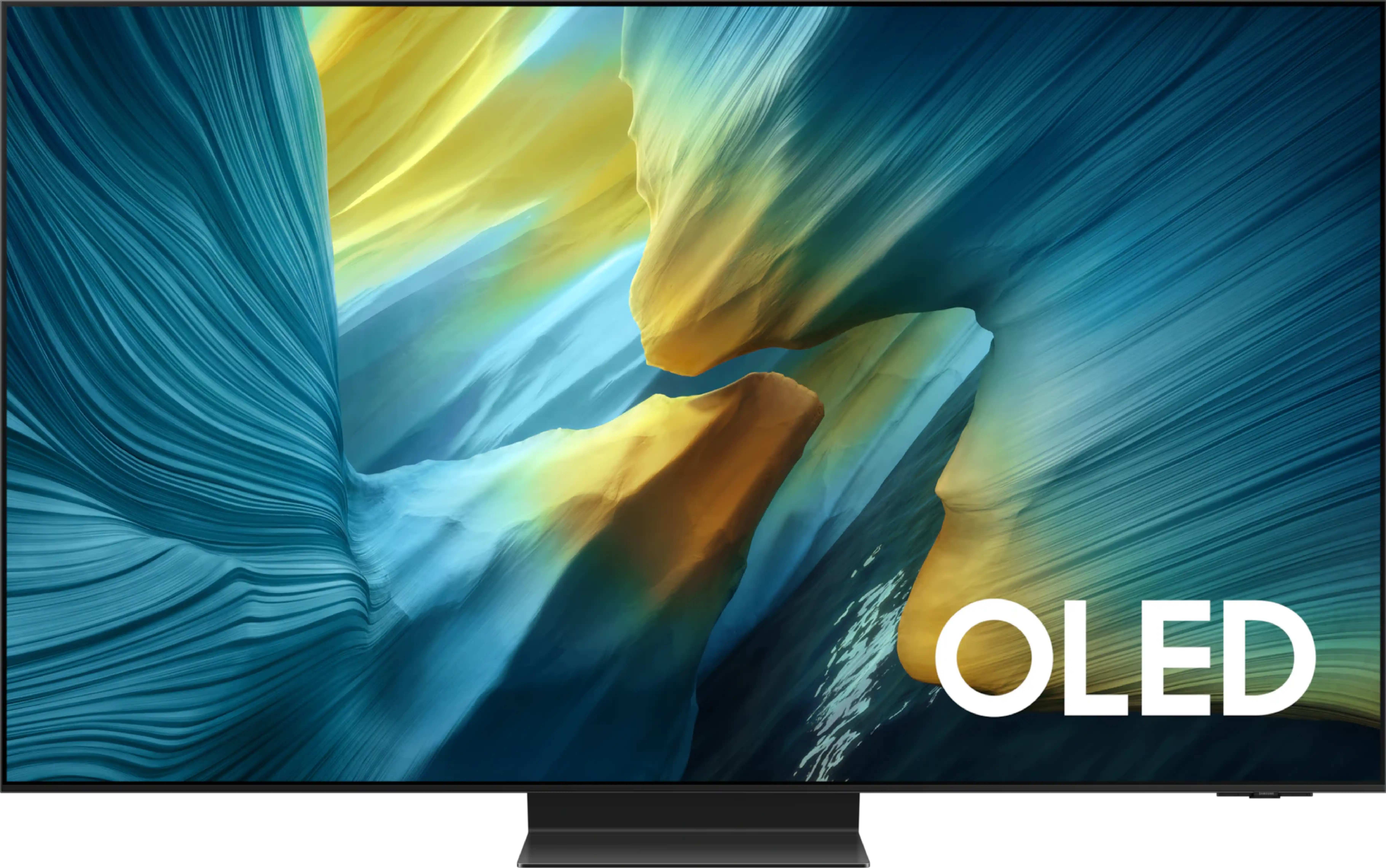
Panel type: WRGB OLED
Resolution: 3840x2160
System: Google TV
Model year: 2024
Complete the survey to find out the result

Panel type: QD-OLED
Resolution: 3840x2160
System: Tizen
Model year: 2025
Complete the survey to find out the result

Overall rating
8.1
8.8
Movies and series in UHD quality
8.2
9.3
Classic TV, YouTube
8.6
9.3
Sports broadcasts (TV and apps)
8.8
9.1
Gaming on console
9.5
10.0
TV as a computer monitor
6.4
8.8
Watching in bright light
5.7
7.1
Utility functions
7.1
7.9
Apps
9.6
8.7
Sound quality
8.1
8.0
Complete the survey to find out what fits your preferences
Advantages
Perfect blacks - OLED
High brightness HDR
Support for advanced HDR formats – HDR10, HDR10+, Dolby Vision, HGiG
Good motion smoothness - 144Hz
Excellent gaming compatibility – ALLM, VRR, low input lag
One of the best viewing angles on the market
Excellent colour reproduction after calibration
Four-sided Ambilight system
GoogleTV operating system – rich selection of applications, voice control, easy operation
Good sound quality – built-in soundbar
Perfect black and excellent contrast
High image brightness
Amazing image quality after calibration
Ultra-fast QD-OLED 165 Hz panel
The best choice for gamers – full support for HDMI 2.1, VRR, ALLM, and HGiG, input lag of just 5 ms (highest rating on the portal!)
Best reflection suppression thanks to the matte screen finish
Wide viewing angles without loss of quality – top level thanks to the QD-OLED panel
Intuitive and fast Tizen operating system with a rich set of features
Modern and elegant design
The One Connect module makes it easy to aesthetically hide cables
Disadvantages
Visible tonal transitions
Infrared remote control
Font display issues (PC computer)
Lack of recording functions from built-in tuners and PIP
Price relative to competitors
No support for DTS:X (home cinema)
No recording to USB from built-in tuners
Cherry black effect in very difficult lighting conditions
Our verdict
Samsung S95F is an excellent continuation and simultaneously an enhancement of last year's model S95D. Thanks to the QD-OLED panel, we receive an image that impresses from the first minutes of viewing. The black is deep and natural, with no signs of backlighting, and the brightness of the new generation panel reaches levels that just recently seemed beyond the reach of OLEDs. These values are so high that the S95F can confidently be compared with the best Mini-LED screens - both in terms of HDR effect and in everyday use under strong daylight. After a slight adjustment of the settings, the television can offer a reference image, creating a cohesive and cinematic experience. However, it's not just a screen for movie buffs but also one of the absolute favourites for gamers. The 165 Hz panel with lightning-fast response, input lag of just a few milliseconds, a full package of gaming features - including VRR, ALLM, and exceptionally implemented HGiG - along with four HDMI 2.1 ports, make the S95F effortlessly meet the demands of both next-gen console owners and PC gamers. This complete set of possibilities makes the S95F one of the best gaming televisions on the market. Samsung has also taken care of user-friendly details. The matte screen coating effectively eliminates reflections, ensuring that even in a bright living room, the image remains clear and comfortable. The One Connect module organizes the cabling, moving all the connections to a separate box, which will be appreciated by anyone who likes to regularly juggle connected devices. The design of the television is slim, elegant, and thoughtful – it is evident that this is a Super Premium class product that looks great in any interior. Of course, like any equipment, the S95F has its minor compromises, but given its class and completeness, it's easy to forget about them.
This is a television that combines the best picture quality with functionality and user comfort. Undoubtedly, it stands up to the strongest competition and can be confidently regarded as one of the main contenders for the title of television of the year 2025.
TV appearance





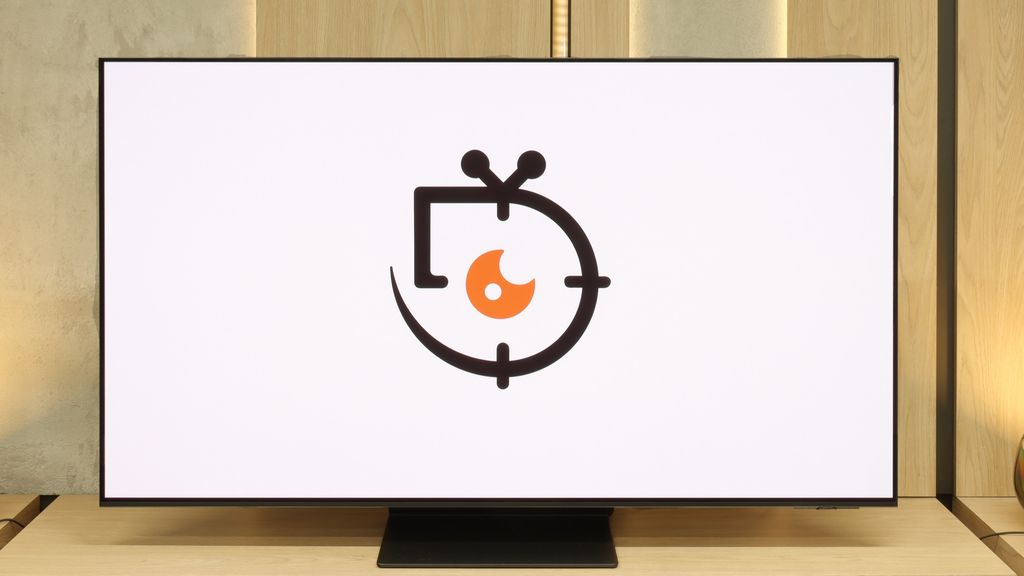
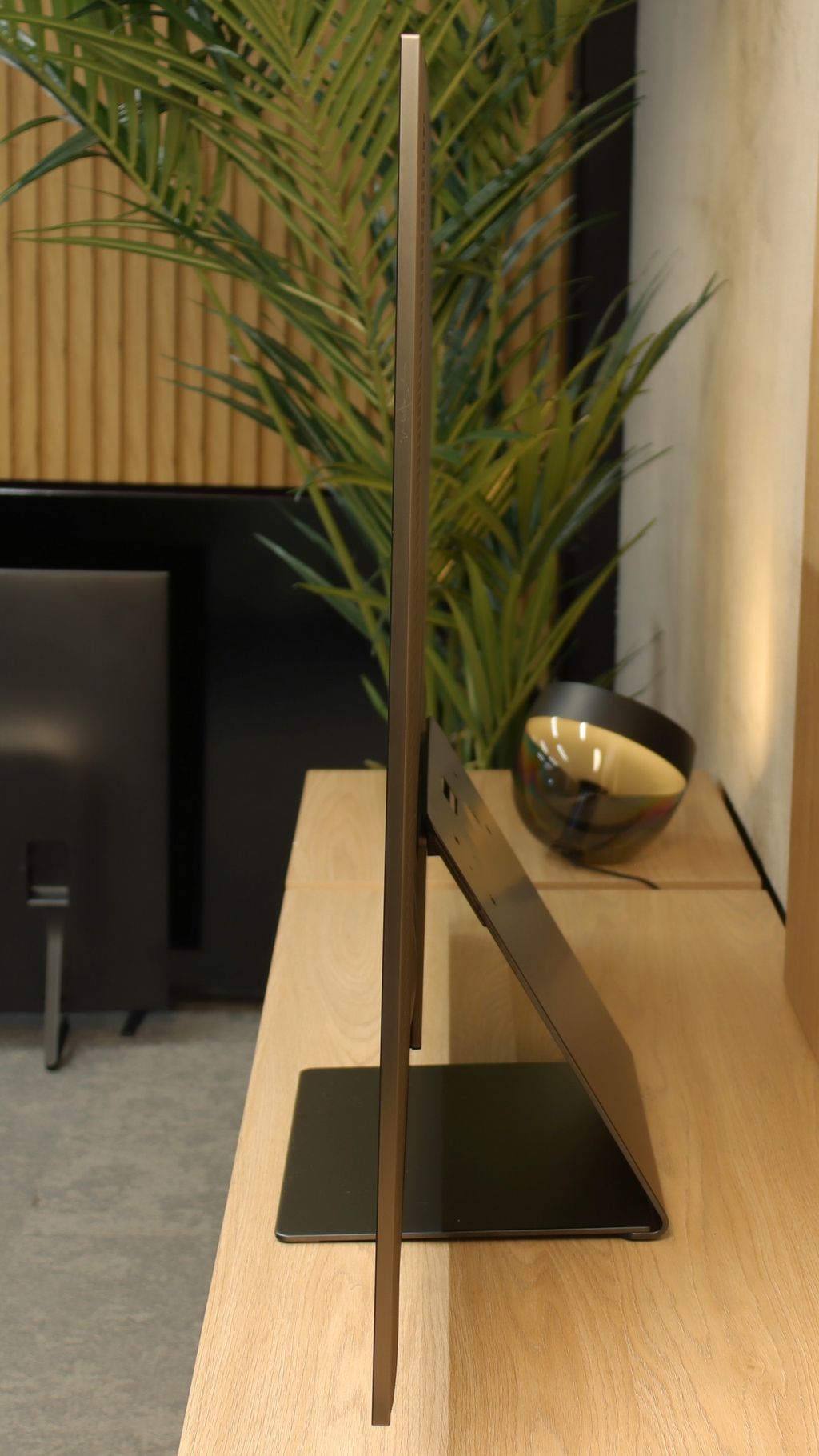
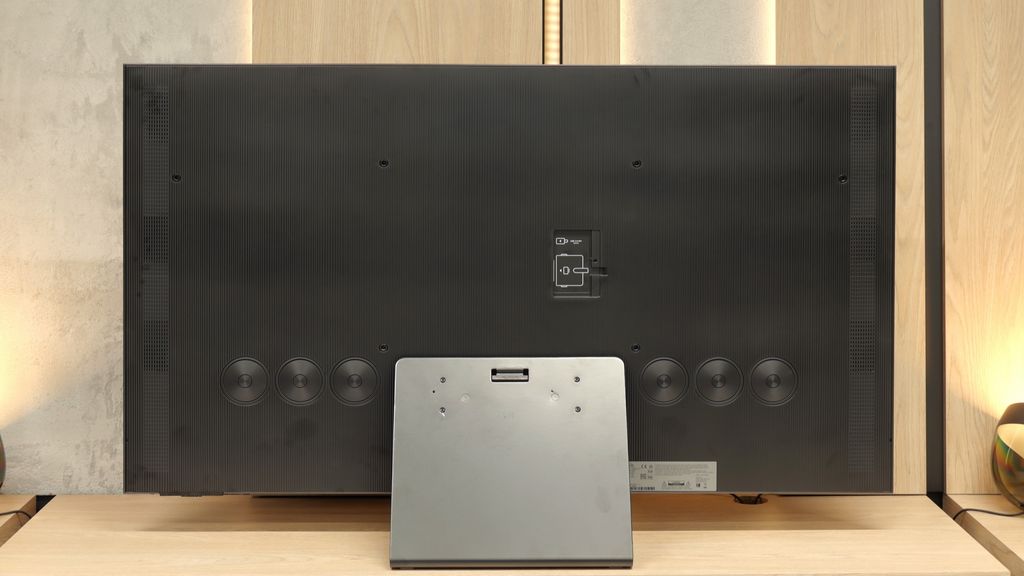
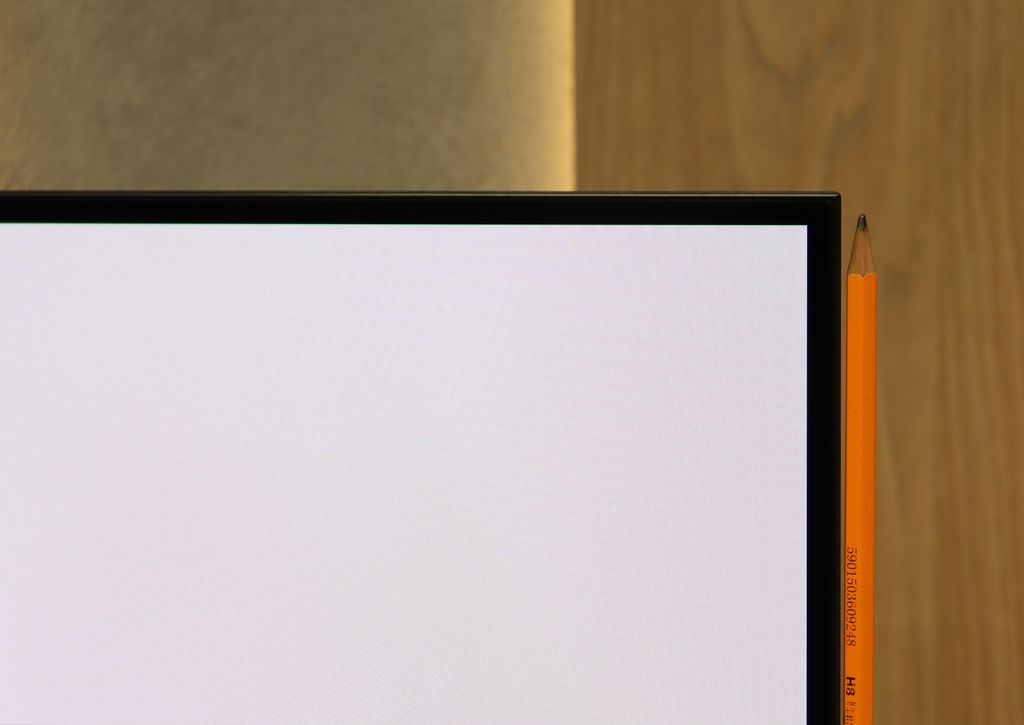
Contrast and black detail
10/10
10/10
Contrast:

Result
∞:1

Result
∞:1

Result
∞:1

Result
∞:1

Result
∞:1

Result
∞:1

Result
∞:1

Result
∞:1

Result
∞:1

Result
∞:1
Halo effect and black detail visibility:


The Philips OLED909 presents exemplary achievements in the category of contrast and black levels, characteristic of OLED technology. Tests on five panels confirmed infinite contrast, making the television an ideal choice for film enthusiasts in darkened rooms. A scene from the film Oblivion impresses with the excellent separation of light from the lamp, allowing full appreciation of the precise reproduction of even the smallest details. The scene from the film Sicario 2 also performs well, where the bright lights of the helicopter have been perfectly separated from the dark background. However, in this same scene, the phenomenon of desaturation, or loss of colour saturation, is noticeable. Although this is not directly related to the assessment of contrast and black levels, it is worth mentioning, especially if perfect colour reproduction in every situation is crucial. Despite this minor flaw, the black levels generated by the Philips OLED909 remain incredibly deep and deserve top marks.
The Samsung S95F with a QD-OLED panel demonstrates that when it comes to blacks and contrast, it's hard to find anything better. Even the first test scenes prove that this television can achieve absolute black, while flawlessly reproducing even the tiniest points of light. The effect is stunning – a star-filled sky looks as if it has been taken directly from an observatory, and the cinematic shadows gain depth and drama. Details in the shadows are preserved with reference-level accuracy, making the experience of watching cinema at home take on a new dimension.
HDR effect quality
7.8/10
8.7/10
Luminance measurements in HDR:

Result
1394 nit

Result
1471 nit

Result
1594 nit

Result
1552 nit

Result
708 nit

Result
2044 nit

Result
2159 nit

Result
2167 nit

Result
2180 nit

Result
1427 nit
Scene from the movie “Pan” (about 2800 nits)


Scene from the movie “Billy Lynn” (about 1100 nits)


Static HDR10


Dynamic: Dolby Vision
Dynamic: HDR10+


HDR luminance chart:
SAMSUNG OLED S95F (QD-OLED)
Luminancja HDR
Luminance of RGB colors
Philips OLED909
Luminancja HDR
Luminance of RGB colors
Philips OLED909 impresses with its HDR quality, achieving up to 1500 nits of peak brightness in tested scenes. This is an excellent result, placing this television among the best OLED models on the market. The MLA panel, also used in models such as the Panasonic Z95A and LG G4, plays a key role here, allowing for exceptionally bright and detailed reproduction of dynamic scenes. However, it is worth noting that in the most demanding scene from the film The Meg, brightness drops to around 700 nits. This is a typical phenomenon in OLED technology, where intensely bright full-screen images cause a limitation in luminance. Nevertheless, the HDR effect still looks very good, and the television performs better than most of the competition under similar conditions. The wide colour gamut coverage also deserves praise. The OLED909 offers 95% coverage of DCI-P3, ensuring that the television can display vibrant and realistic colours.
The new generation of QD-OLED matrices in the Samsung S95F shows its full potential, with brightness results that are truly stunning. In test film scenes like "Life of Pi" or "Sicario 2," where smaller light elements appear – stars, the moon, or headlights – the television managed to achieve over 2000 nits of brightness. This is a result that surpasses even most top-of-the-range Mini-LED models.
The secret lies in the technology itself – instead of a limited number of dimming zones like in Mini-LED televisions, here we have millions of emitting pixels, allowing the television to fully showcase its power without technological compromises. Of course, as this is still an organic panel, in full-screen scenes flooded with white – like in the final sequence of the film The Meg – the brightness drops to around 1400 nits. Nevertheless, the result remains excellent and clearly exceeds what any OLEDs, both QD-OLED and WOLED, have offered so far. The colour reproduction is also particularly noteworthy. Thanks to QD-OLED technology, the television achieves nearly 100% coverage of the DCI-P3 colour space and about 80% in BT.2020. These values make HDR images not only dazzling in brightness but also captivating in the richness of colours.
Factory color reproduction
7.6/10
7.2/10


Factory Mode
After calibration


Factory Mode
After calibration
Just like with other televisions, the Philips OLED909 has been tested for colour reproduction in factory modes. The best mode turned out to be Filmmaker Mode, however, despite its name, it is not without flaws.
The biggest problem is the white balance. In both HD and 4K HDR content, there is a noticeable dominance of green and red hues, which causes a distinct yellowing of the screen. This effect is particularly evident in test materials, for instance in a scene with Tom Cruise in the foreground, where the difference compared to a calibrated image is very apparent.
As for brightness characteristics, in HD material the gamma was overly boosted – it was below the reference value of 2.4, which gave the image a “milky” filter and affected overall clarity. In the case of 4K HDR content, we noticed the opposite phenomenon – at the beginning of the EOTF curve, there is a noticeable drop, indicating problems with reproducing the smallest details in dark scenes. Although Filmmaker Mode offers acceptable quality, noticeable errors in white balance and brightness characteristics show that the television requires additional calibration to fully demonstrate its potential in colour reproduction.
The best picture mode straight out of the box is undoubtedly Filmmaker Mode – a mode that Samsung has been using for several years, designed to faithfully convey the creators' intent. In SDR content, its implementation is not bad, although some imperfections can be observed. The image is slightly dimmed, and the screen has a subtle pinkish tint due to the dominance of red and blue in the white balance. Colour errors were maintained at a level of 3–4 ΔE units – and for those who are not familiar: a value above 3 is the threshold at which the average human eye starts to notice differences.
However, much greater problems arise in HDR content. Here, the white balance was not such a significant issue – a slight excess of blue did not significantly hinder the viewing experience. The problem became managing brightness. In practice, the television "blasted" the image too much, causing details in the blacks to completely disappear. The final effect was far from expected, and colour errors in this mode became quite pronounced. It's hard to say why such a design decision was made, but it was evident that the factory HDR settings did not allow this television to showcase its full capabilities.
Color reproduction after calibration
9/10
9.4/10




Philips OLED909 offers tools for image calibration, which significantly improves its quality. After calibrating the Filmmaker Mode, the television presents a much more natural colour representation. The white balance after calibration looks very good. Although we noticed slight deviations in the blue tint in HD content, the errors are within acceptable limits, and the image gives a much better impression than in the factory settings. The brightness characteristics, including gamma and EOTF, have also been clearly improved. The television no longer has issues with excessive brightening or darkening of the image. Both dark and bright details are now rendered correctly, making the image look very good in every scene. After calibration, the Filmmaker Mode in the Philips OLED909 offers excellent image quality that will meet the expectations of even the more demanding users. Calibration fully utilises the potential of this model.
After calibration, it was possible to make subtle adjustments to the white balance and significantly improve the image characteristics. In SDR content, the quality has become practically reference-level – most colour errors have fallen below a ΔE value of 1, which is the level at which the human eye can no longer discern differences. This is a result that places the S95F among the very best televisions available on the market.
In HDR materials, the calibration also brought about a significant improvement. The television's tendency to blow out highlights has been brought under control, as confirmed by the analysis of the EOTF curve. A slight tendency to brighten the entire scene or occasional loss of detail in blacks can still be observed, but this does not significantly affect the overall perception. After calibration, the S95F reveals its full potential and can be described as one of the best televisions on the market!
Smoothness of tonal transitions
4.6/10
8.9/10












The Philips OLED909 performs average in terms of fluidity of tonal transitions. The WOLED panel used in this model is not known for handling tonal transitions perfectly, and in the case of the OLED909, it looks somewhat worse than in competing models with similar panels. There are noticeable subtle transitions and colour blends in the bright and dark areas of the image, which can be particularly visible in more demanding scenes with subtle gradients. This effect may influence the perception of content, especially for users who pay attention to such details.
The Samsung S95F with a QD-OLED panel handles tonal transitions really well. It's difficult to find serious issues here – the colour gradation is smooth, and the image looks natural. Only in very dark scenes and shades close to black can slight imperfections be noticed, but they don't significantly impact everyday viewing. The overall impression is that the fluidity of transitions is at a very high level and does not distract the viewer's attention.
Image scaling and smoothness of tonal transitions
6.9/10
7.5/10
Smooth transition function

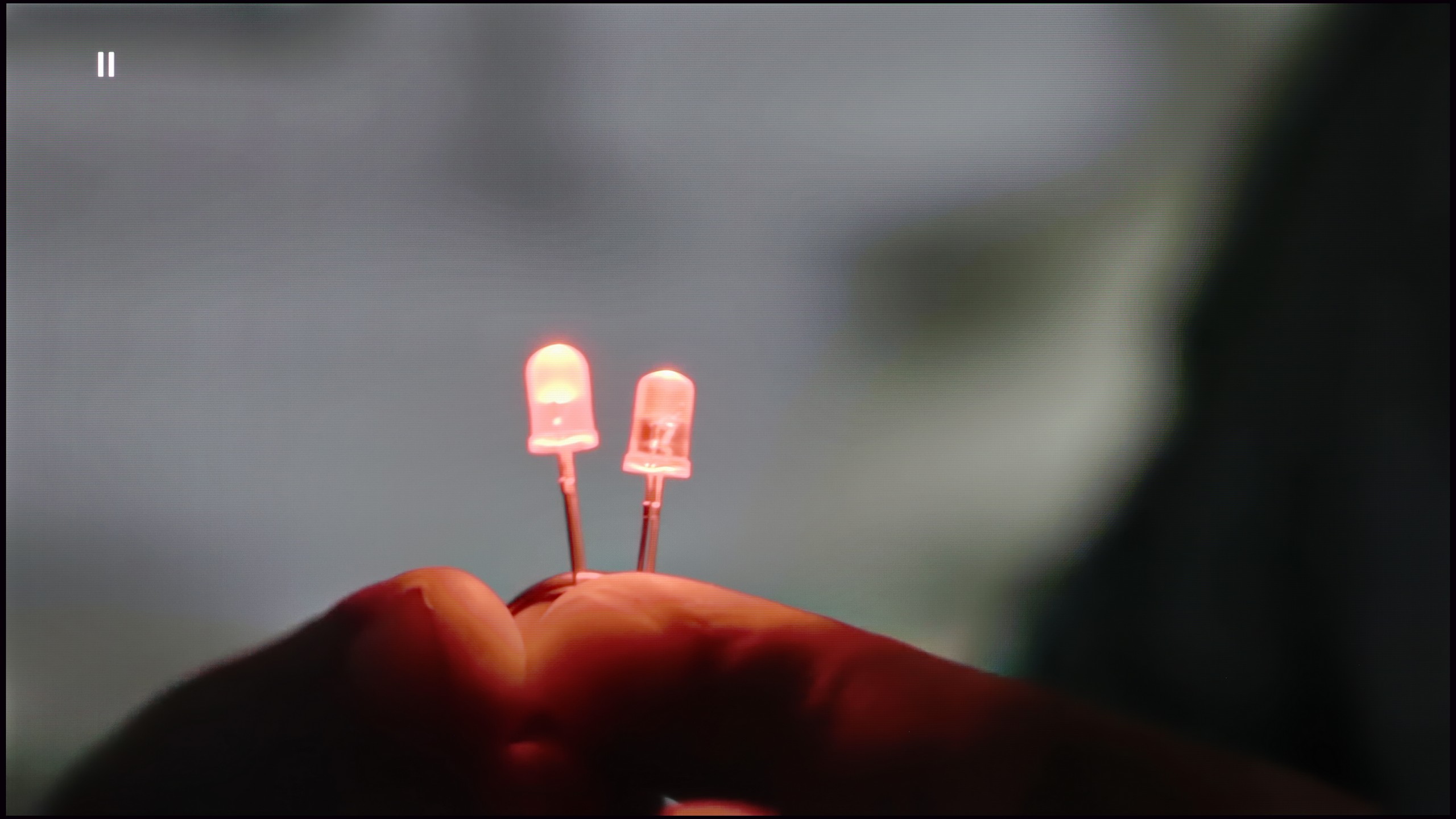
Image without overscan on the SD signal


The Philips OLED909 offers a distortion reduction feature aimed at smoothing tonal transitions. Unfortunately, the effectiveness of this function leaves much to be desired. Setting it to the "Medium" level brings certain effects, but it comes with the risk of blurring important details in the image. For this reason, we do not recommend using this option unless we are keen on mitigating visible artifacts at the cost of detail.
As for image scaling, the television presents a very plastic image, which may appeal to viewers who prefer a softer picture. Those expecting clearer sharpness will also find a solution, as image scaling can be adjusted according to individual preferences in the settings.
The Samsung S95F offers a noise reduction feature that is responsible for smoothing tonal transitions. It works very effectively, but in practice, it can be overly aggressive. Materials of lower quality – e.g., older recordings or videos from YouTube – become soft and plastic when this feature is activated, resembling an image digitally smoothed in a graphic program. Unfortunately, the natural film grain, which often adds authenticity to the image, disappears in the process. Fortunately, the television does not lose too many fine details, such as in skin textures or elements of the surroundings. Therefore, this feature is best used with discretion – depending on preferences, one can achieve a smooth image that is less natural, or one that is truer to the original. In our opinion, the most universal choice is the “Standard” setting.
The image scaling performs significantly better. The television handles materials of lower resolution well – even content at 576p looks quite decent, although a slight blockiness can be noticed. Overall, the effect is very good, although it somewhat falls short of what Sony Bravia 8 (II) or LG G5 can achieve. It is also worth mentioning a minor imperfection of the S95F – in older materials, overscan may occur, causing a slight trimming of the left edge of the image.
Blur and motion smoothness
8.5/10
9/10

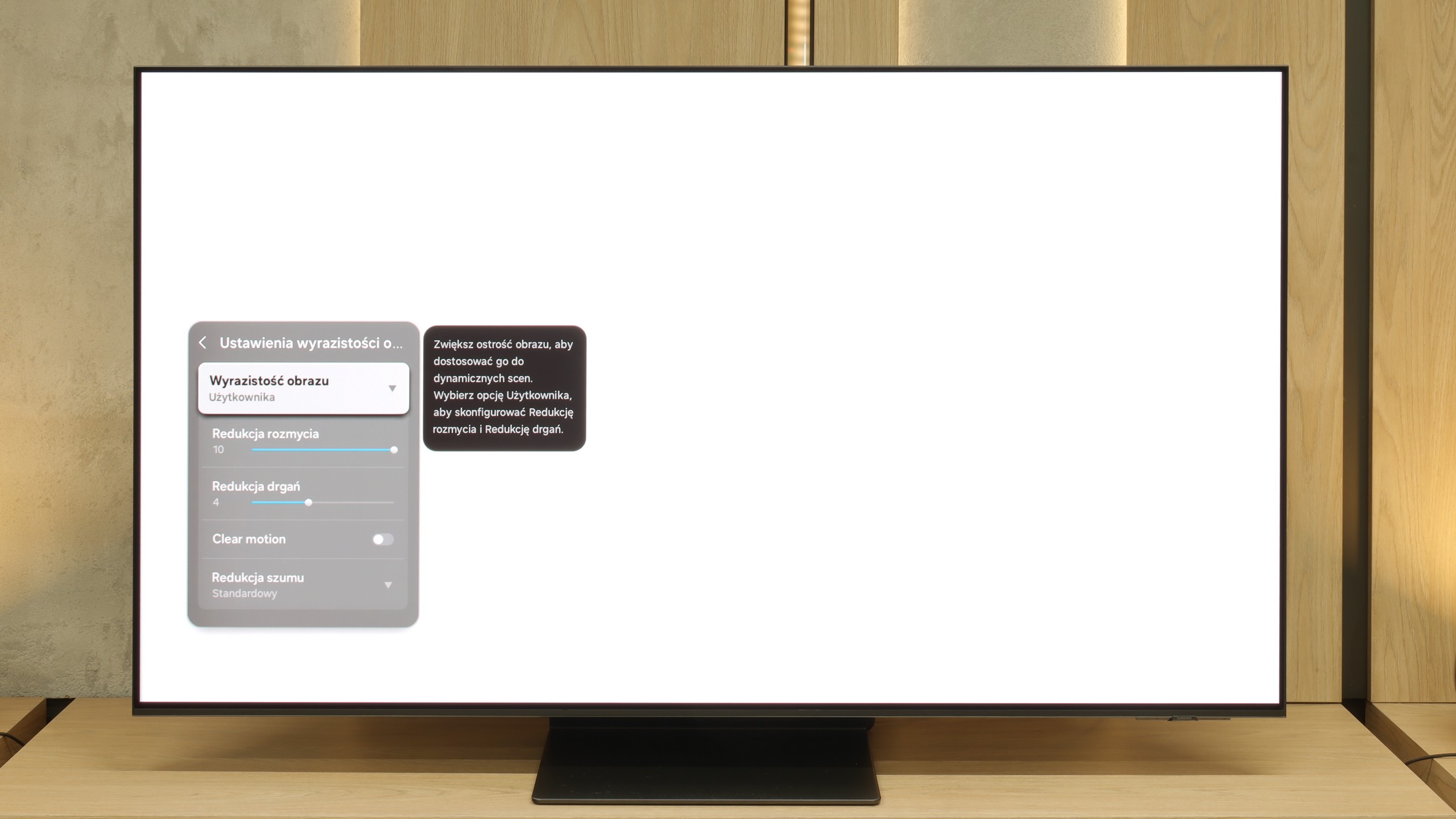
Blur (native resolution, maximum refresh rate):






Blur (BFI function enabled):
Image flickers in this mode



Smużenie ():
Smużenie (4K@165Hz):



The Philips OLED909 with a 144 Hz panel offers excellent motion smoothness, which should satisfy both film enthusiasts and gamers. Additionally, the television is equipped with a motion smoothing feature called "Motion Style", which allows for precise adjustment of motion fluidity to personal preferences. In the settings, we find two sliders: "Smoothness", responsible for regulating motion fluidity in films, and "Blur Reduction", which helps eliminate minor artifacts and distortions in dynamic scenes. This feature works well, ensuring that even rapid movements on the screen are clear and readable.
The Samsung S95F shows phenomenal performance in terms of motion fluidity. The panel operates at a native resolution of 4K with a refresh rate of up to 165 Hz, and combined with QD-OLED organic technology, it delivers incredible results. Sports and games look stunning – the image is fast, dynamic, and very natural. Additionally, the built-in motion smoother and motion blur reduction system allow you to tailor the character of the picture to your own preferences. You can opt for a more "frame-like" effect with visible film structure or a smooth, theatrical spectacle. Every viewer will find a setting that suits them.
Console compatibility and gaming features
10/10
9.6/10
- ALLM
- VRR
- VRR range40 - 144Hz48 - 165Hz
- Dolby Vision Game Mode
- Correct implementation of HGIG
- 1080p@120Hz
- 1440p@120Hz
- 4K@120Hz
- Game bar

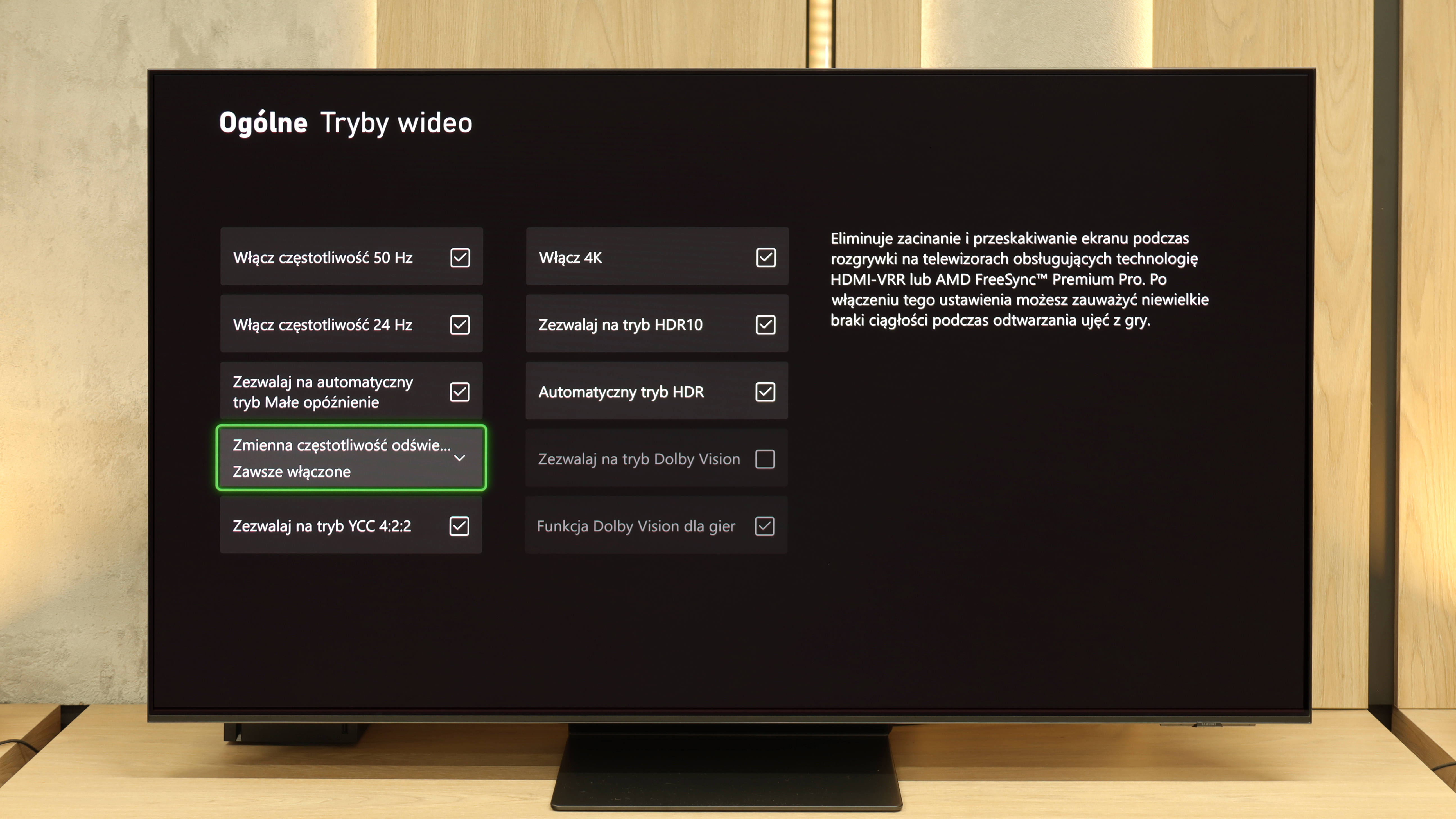

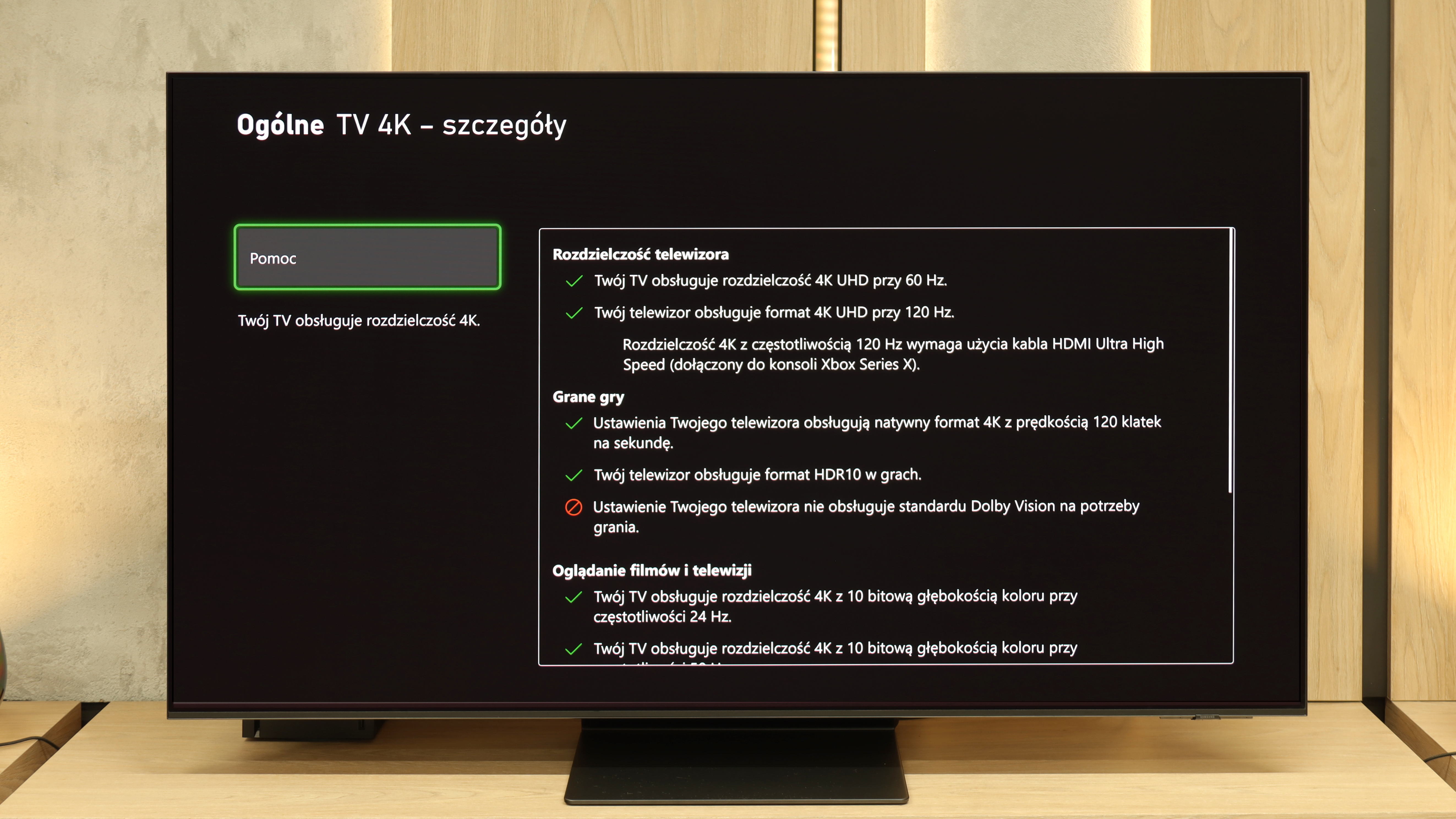

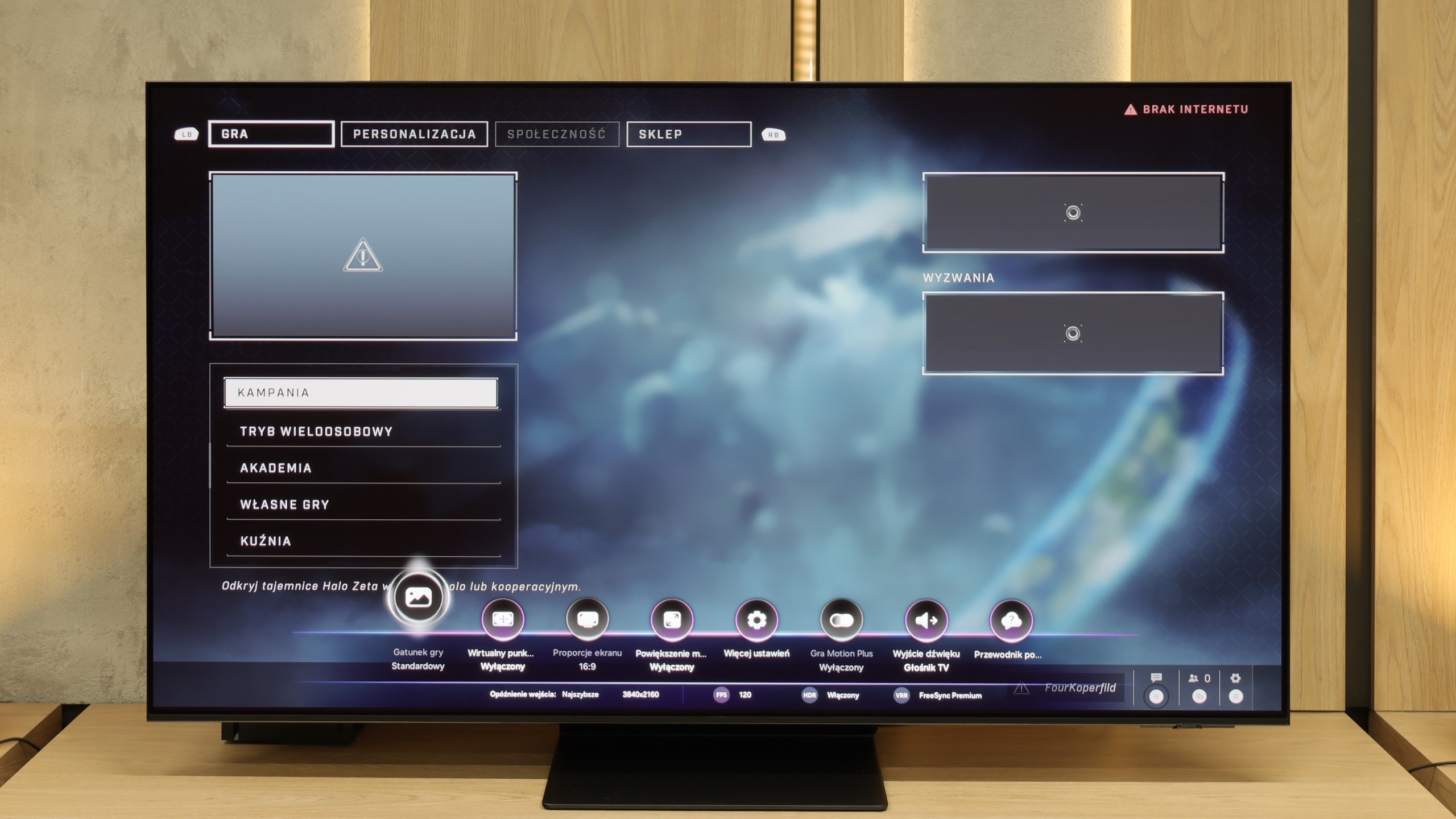

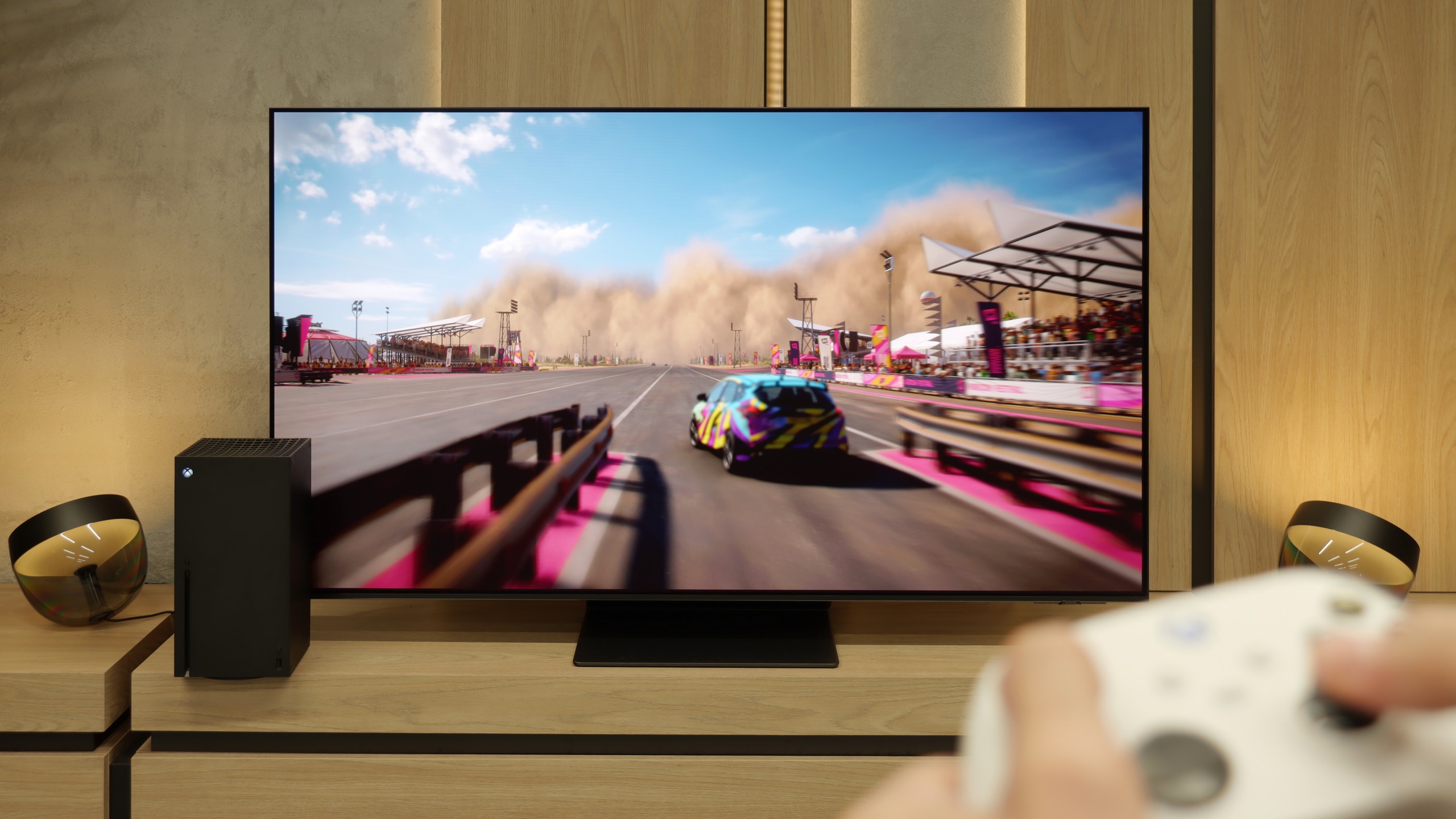
The Philips OLED909 is a television that meets practically all the requirements of gamers. Equipped with ALLM (Auto Low Latency Mode), VRR (Variable Refresh Rate), and support for Dolby Vision, it guarantees an excellent gaming experience. Additionally, the television offers very low input lag, ensuring that reactions to player movements are instantaneous, which will be particularly appreciated by fans of fast-paced games.
The television handles any resolution at 120 Hz without any issues, and even supports higher refresh rates. The HGiG feature, responsible for accurately displaying HDR content in games, works as it should, making the image in game mode balanced and aligned with the guidelines of console manufacturers.
The OLED909 is also equipped with the Game Bar feature, which allows for quick preview and adjustment of game-related settings. Although the interface of this solution appears less visually appealing than that of competitors, it serves its purpose well, offering all the essential options in one place.
The advantages of low motion blur and excellent motion fluidity characteristic of OLED panels are just the beginning, as the Samsung S95F has been designed with gamers in mind. The manufacturer has equipped it with four HDMI 2.1 ports – although limited to a bandwidth of 40 Gb/s, in practice this has no impact on compatibility with consoles or PCs. We get a full suite of gaming features: variable refresh rate (VRR), automatic game mode (ALLM), as well as a very well-implemented HGiG standard, which ensures that HDR titles look exactly as their creators intended. Completing the package is the Game Bar – a clear settings hub where we can preview and change all key image parameters with one motion. The proprietary motion smoother, Game Motion Plus, also deserves commendation, as it can smooth out animations, which is particularly useful in productions running at 60 frames, where stability is not always exemplary. While support for Dolby Vision in games is lacking, it’s hard to view this as a serious drawback – Samsung compensates with other solutions. This is one of the best, if not the best, gaming televisions available on the market today.
Input lag
10/10
10/10
SDR
HDR
Dolby Vision
Philips OLED909 achieves remarkable results in the input lag category. Values of 13 ms at 60 Hz and 5 ms at 120 Hz are among the best outcomes available on the market. Such low input lag ensures immediate response, which is crucial for gamers expecting maximum precision in dynamic games. Special praise is warranted for its performance in Dolby Vision mode, where low input lag is also maintained. This allows gamers to enjoy not only smooth gameplay but also the full visual potential of HDR games without any compromises. Philips OLED909 is one of the best choices in this regard for gaming enthusiasts.
The input lag on the S95F is at a level where it is difficult to even talk about any delay. At 5 ms with 120 Hz content, there is no room for hesitation between pressing the button and the response on the screen. It’s pure immediacy. And if someone is worried about the 60 Hz mode – don't worry, there it’s 10 ms, which still places the television among the absolute best and gives no reasons for complaints.
Compatibility with PC
6.4/10
8.8/10

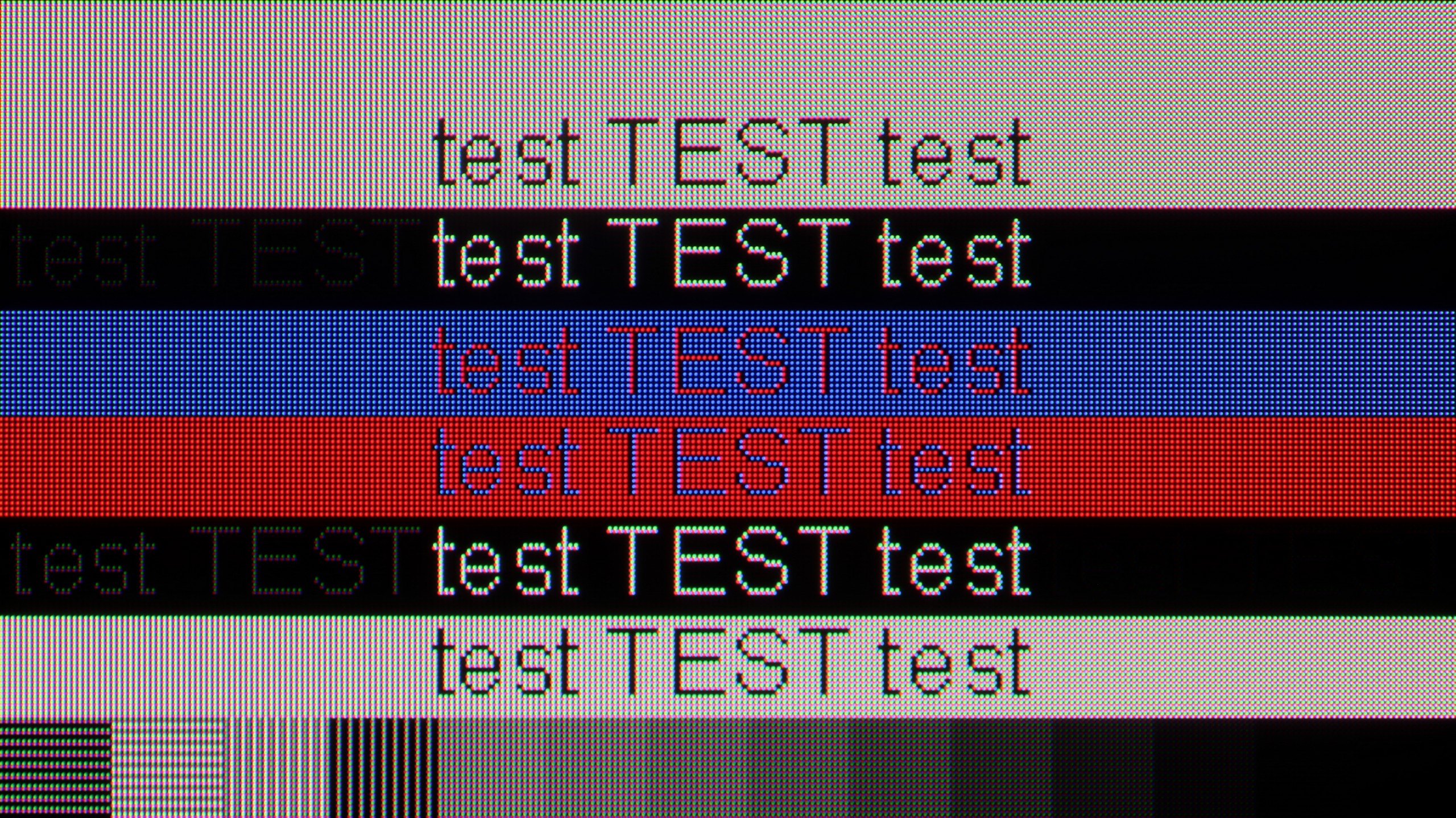
The Philips OLED909 is a good choice for gaming on a computer. The television supports G-SYNC, provides very low input lag and offers a refresh rate of 144 Hz in PC mode, making it an ideal solution for gamers who value smooth and responsive gameplay. However, for everyday work with text or graphics, the situation is slightly worse. Although the readability of fonts is at an acceptable level, up close, you can notice that they appear slightly blurry. This is due to the lack of full implementation of chroma 4:4:4, which is responsible for perfect sharpness and clarity of fonts.
The OLED909 will perform excellently in gaming applications, but for those planning to use the television mainly for text work, it may be less suitable. In such cases, it is worth considering a device with full support for chroma 4:4:4.
The S95F with a QD-OLED panel is a true magnet for PC gamers. The 165 Hz refresh rate combined with virtually imperceptible input lag and full support for G-Sync and FreeSync means the television performs like a top-tier monitor. Dynamic action games, shooters, and racing titles gain the smoothness and responsiveness that are hard to find in competing models. When working with text, a subtle rainbow halo can be seen around the letters, characteristic of the pixel structure of QD-OLED, but with proper handling of chroma 4:4:4, everything remains readable and does not interfere with everyday use.
Viewing angles
9.7/10
9.8/10
The Philips OLED909 offers some of the best viewing angles available on the market. OLEDs are known for their excellent picture quality from various angles, but the use of micro-lens technology further enhances this capability. As a result, the television maintains excellent colours, contrast, and brightness even when watching the picture from a significant angle. In practice, the OLED909 performs so well that it can even compete with televisions equipped with technology QD-OLED, which also provides wide viewing angles. This makes the television perfect for large rooms and watching together from various positions without worrying about losing picture quality.
The Samsung S95F with a QD-OLED panel currently offers some of the best viewing angles on the market. Whether we are sitting directly in front or to the side of the sofa, the image remains consistent – colours do not lose intensity and contrast does not deteriorate. It is a screen where it is hard to find a weak point in this category.
TV efficiency during daytime
5.7/10
7.1/10

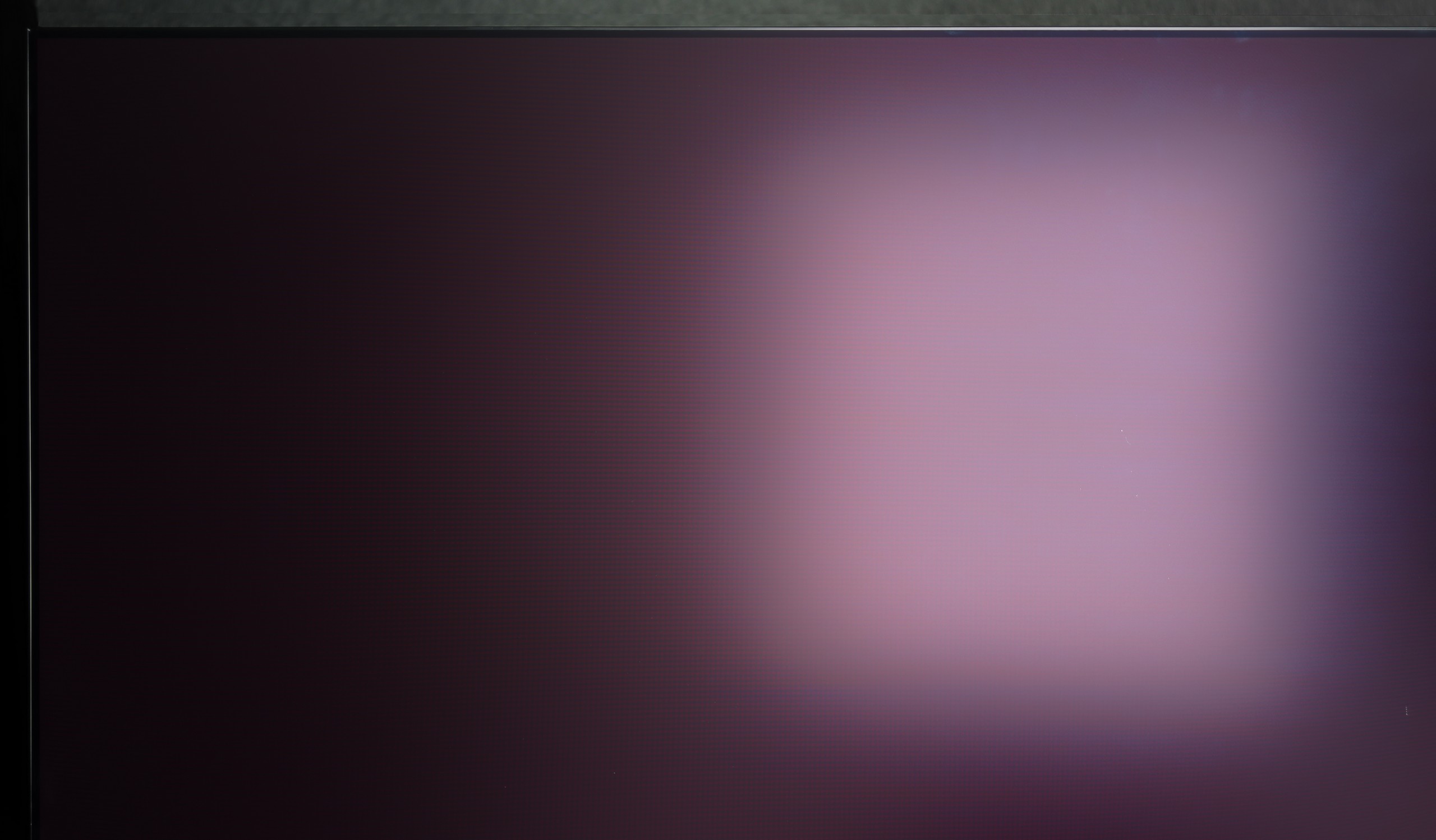

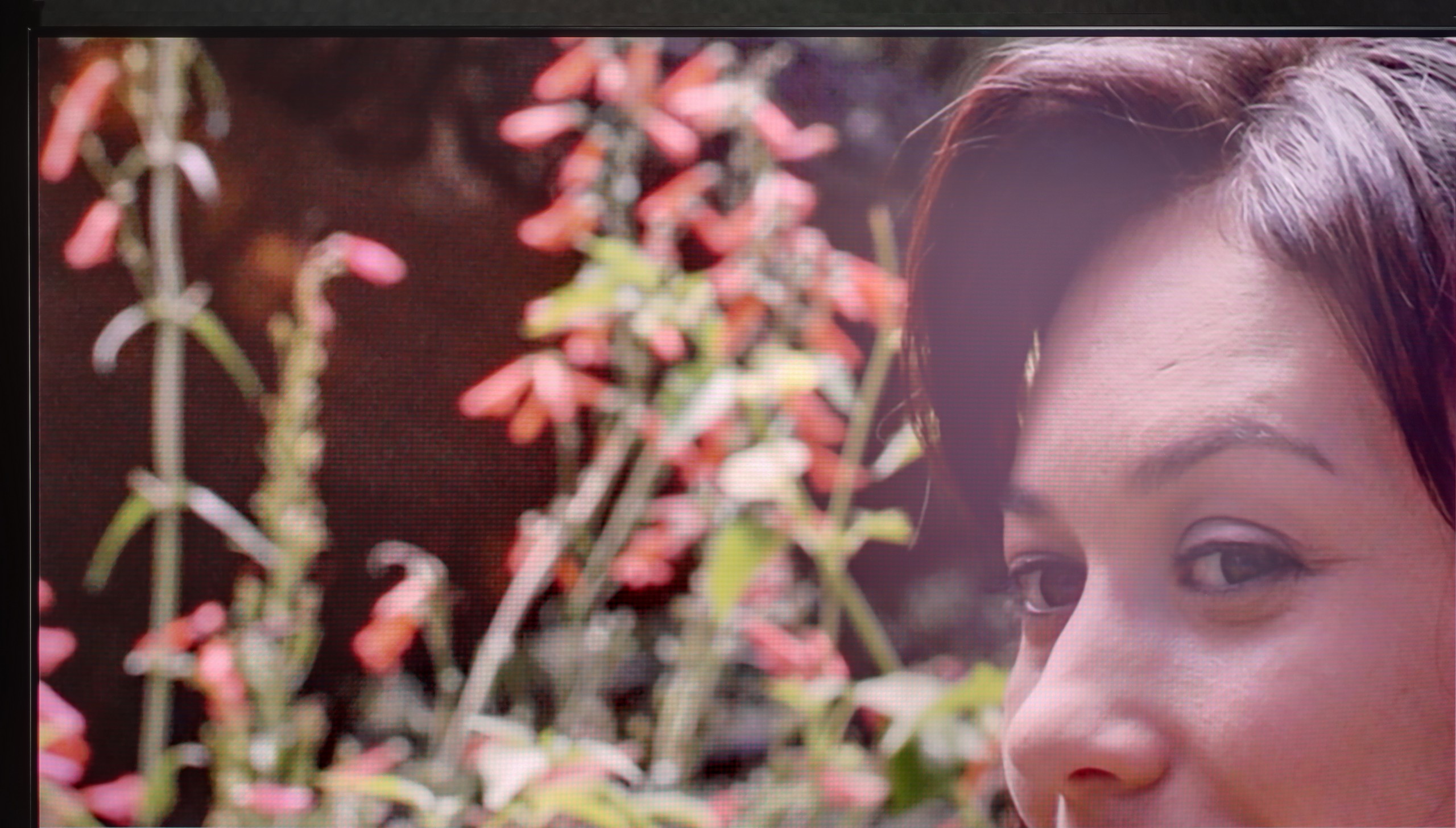
Matrix brightness
Average luminance SDR
SAMSUNG OLED S95F (QD-OLED): 671 cd/m2
Philips OLED909: 427 cd/m2
Philips OLED909, despite the glossy surface of the panel, handles the suppression of reflections from light falling directly on the screen quite well. This is particularly useful in brighter rooms where reflections can disrupt viewing. However, the use of micro-lens technology has its limitations – the black levels during the day take on a slightly pink tint. A similar, although more noticeable phenomenon can be observed in QD-OLED panels.
Regarding brightness, the OLED909 achieves an average brightness in SDR of 430 cd/m². This is sufficient for comfortable use of the television even in moderately challenging lighting conditions. Nevertheless, it is worth remembering that the brightness levels of OLEDs still fall short of televisions with mini-LED technology, which can be several times brighter.
One of the biggest distinguishing features of the Samsung S95F compared to its competitors is the matte screen coating. This solution excels in reducing reflections and glare – the image remains clear even in a brightly lit living room. However, it is important to remember that the characteristics of the QD-OLED matrix come with a certain compromise. Under intense light, the black can brighten, taking on a shade of cherry black, which affects the saturation of colours. On the other hand, the brightness of the panel, reaching around 700 nits in SDR mode, is fully sufficient for the television to perform flawlessly in typical daytime conditions.
Details about the matrix
Subpixel Structure:

Panel uniformity:


Philips OLED909
SAMSUNG OLED S95F (QD-OLED)
TV features
7.1/10
7.9/10
- HDMI inputs2 x HDMI 2.0, 2 x HDMI 2.1 48Gbps0 x HDMI 2.0, 4 x HDMI 2.1 40Gbps
- OutputsToslink (Optical audio), eARC (HDMI), ARC (HDMI), Mini-Jack (Headphones)Toslink (Optical audio), eARC (HDMI), ARC (HDMI)
- Network InterfacesWi-Fi 2.4GHz, Wi-Fi 5GHz, Ethernet (LAN) 100MbpsWi-Fi 2.4GHz, Wi-Fi 5GHz, Ethernet (LAN) 100Mbps
- TV receptionDVB-T, DVB-T2, DVB-S, DVB-S2, DVB-CDVB-T, DVB-T2, DVB-S, DVB-S2, DVB-C
Classic features:
- Recording to USB (terrestrial TV)
- Recording programming
- Picture in Picture (PiP)
- RF remote control (no need to aim at the screen)
- Backlit remote control
- Teletext
- Audio only mode
- Possibility to connect Bluetooth headphones to the TV
- Possibility to simultaneously use Bluetooth headphones and the TV speaker
Smart features:
- AirPlay
- Screen mirroring (Windows Miracast)
- Wyszukiwanie głosowe
- Voice search in native language
- Ability to connect a keyboard and mouse


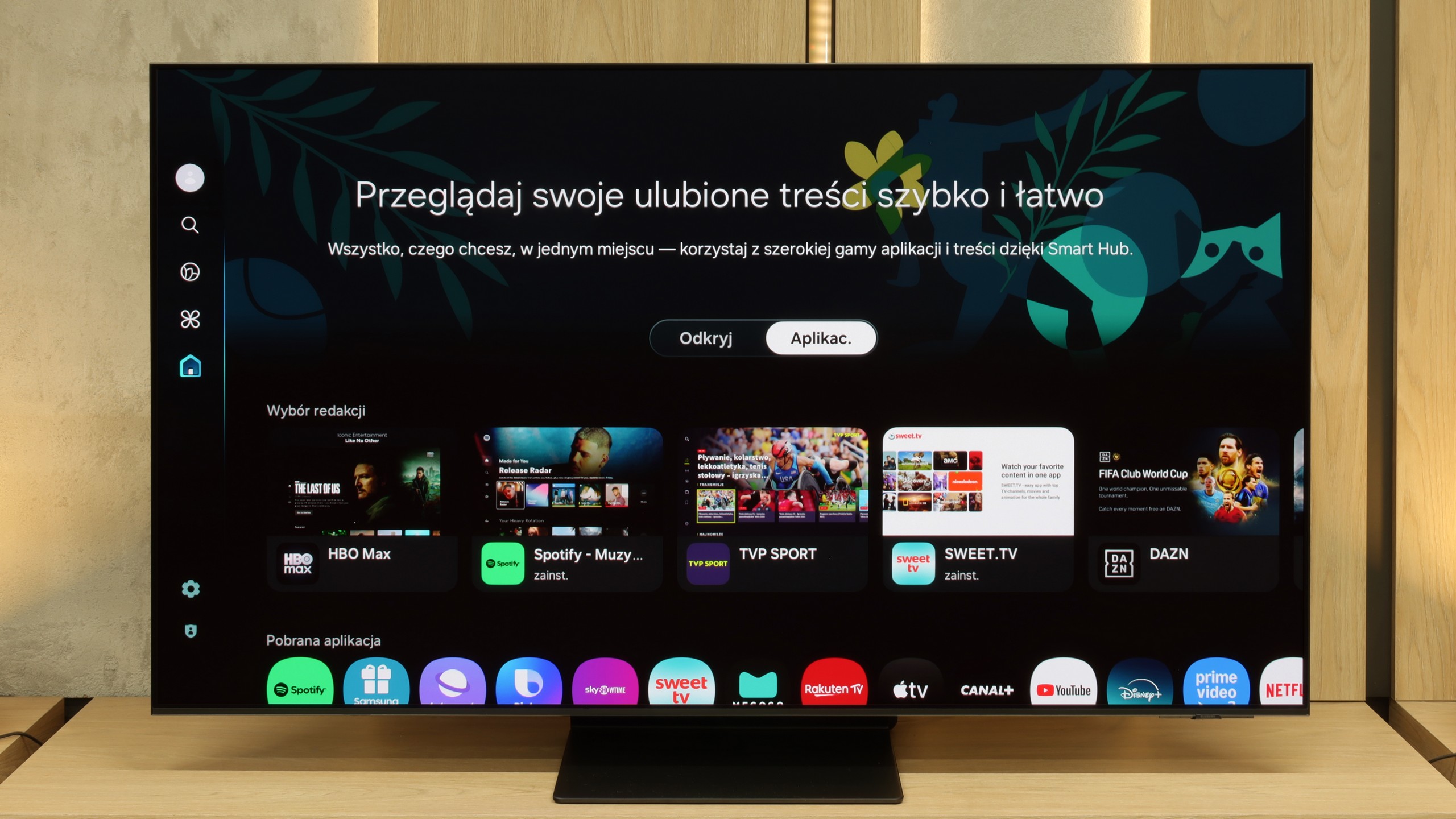
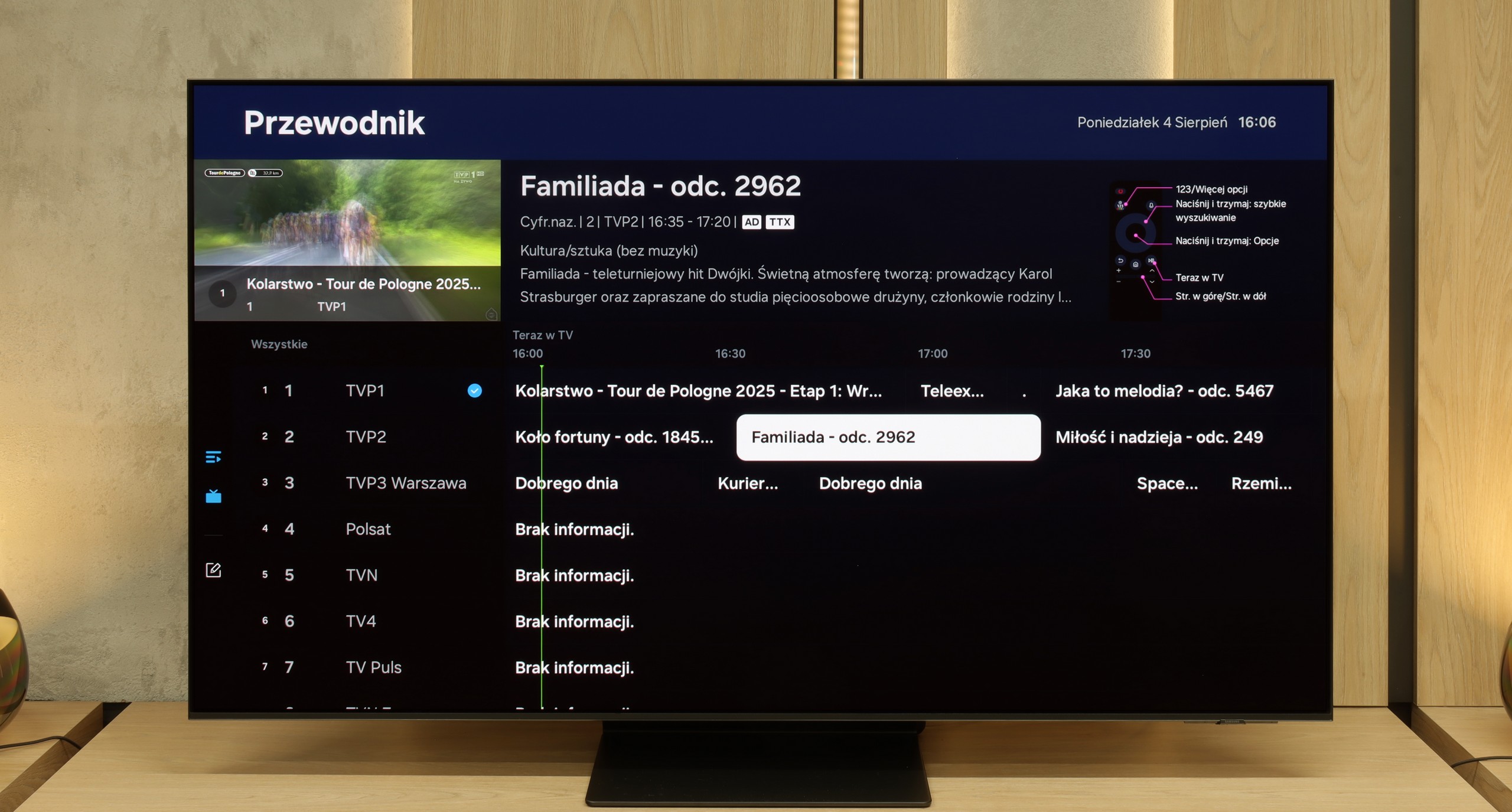
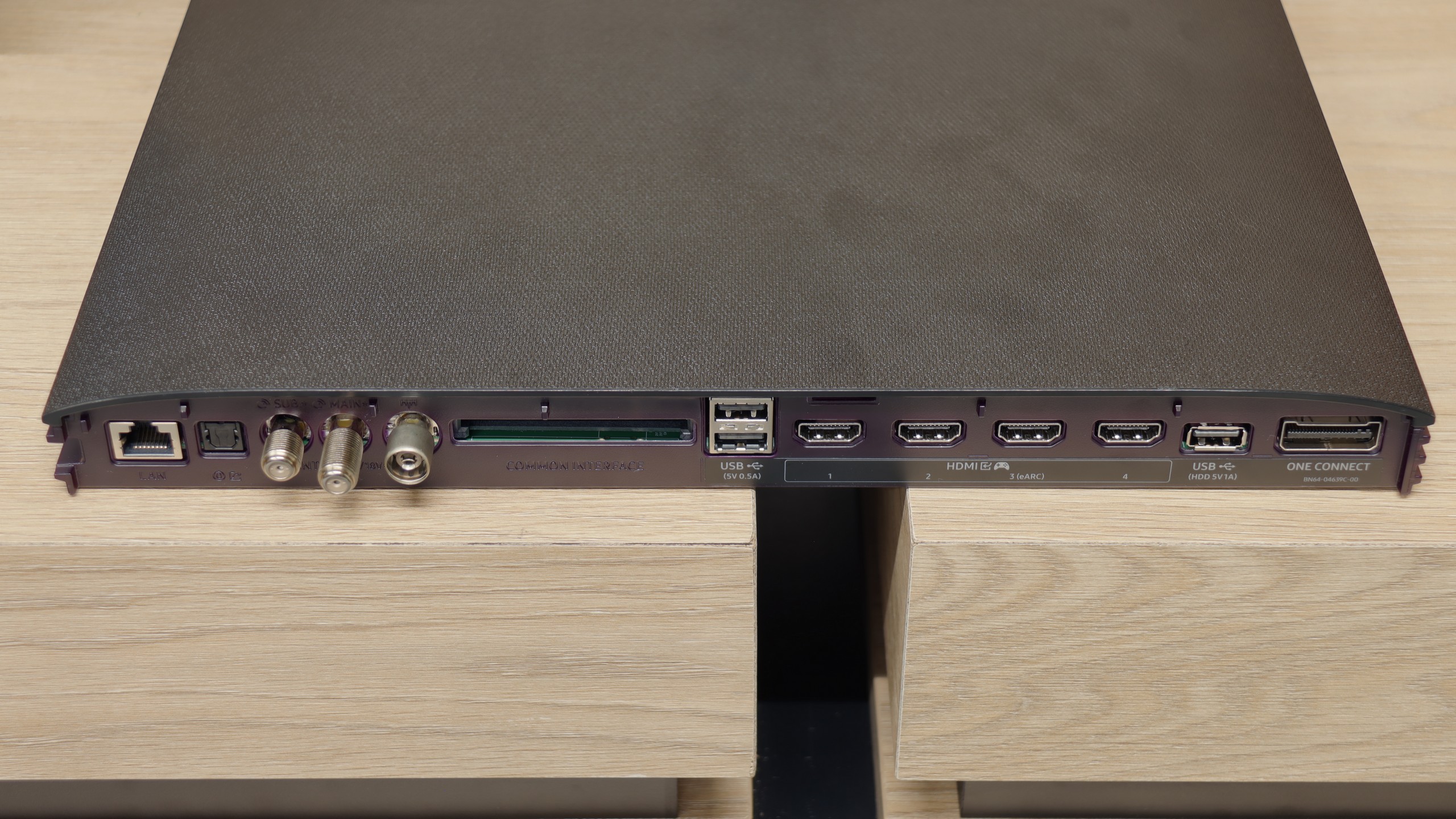
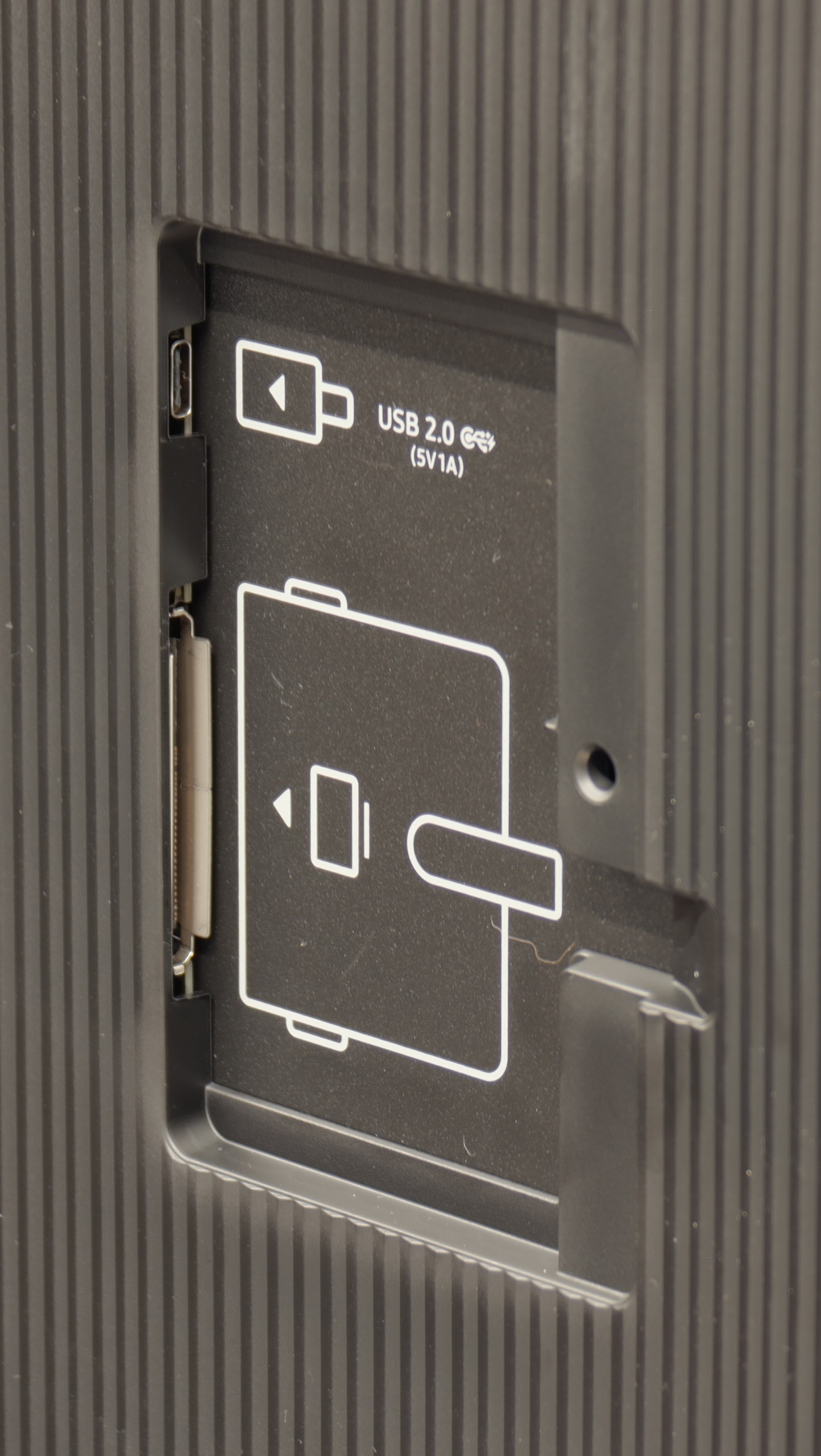
In the OLED909 model, Philips has opted for Google TV instead of its proprietary Titan OS. This solution provides users with significantly greater capabilities, especially concerning the availability of applications. Google TV offers a vast library of programs to download, from popular streaming services to tools and games. The system also supports voice commands, making it easier to search for content and manage the device, enhancing the comfort of daily use.
In terms of user functions, the television also performs well. It features support for AirPlay and Miracast technology, which allow for easy transmission of images and sound from other devices. Additionally, the television easily supports external accessories such as mice and keyboards, enabling it to serve as a more versatile entertainment hub. However, it is worth noting that the OLED909 does not include a PiP (picture-in-picture) feature or the ability to record programmes from its built-in tuners. A new feature in this model is the backlit remote, which looks attractive and operates in hybrid mode – it can function as a smart remote, and when the appropriate button is pressed, the numerical keypad also lights up. Unfortunately, its operation can be irritating, as it is based on standard infrared control, and the only function supporting RF (radio) technology is the voice command feature.
The Philips OLED909 stands out from other models with its four-sided Ambilight system. This allows the television to create dynamic lighting around the screen that adapts to the content being displayed. This solution not only enhances the sense of immersion but also improves viewing comfort in darker rooms. Ambilight remains one of the most distinctive features of Philips televisions, which is difficult to find among competitors.
SmartTV in S95F: Tizen
Against the competition, the Samsung S95F not only shines with its picture quality but also demonstrates that smart features can be truly well thought out. Tizen operates very quickly, does not freeze, and gives the impression that everything is at hand – from AirPlay to simple voice search that works even when the remote control is misplaced. Admittedly, the system is not as open as Android, but frankly, very few will feel its shortcomings – there are plenty of applications, and additional features like integration with SmartThings only enhance the sense of completeness.
Classic Features of the S95F
Interestingly, Samsung reminds us that a television is still a television. Therefore, alongside modern gadgets, we also find the classics – PiP, teletext, or the option to pair headphones via Bluetooth. There is no recording to USB from DVB-T/T2 tuners, but instead, we get a remote control that can also manage the Canal+ decoder and other devices in the living room. And the cherry on top is the One Connect module – all connections in a separate box, making connecting equipment no longer an extreme sport.
Playing files from USB
7.9/10
9/10
Supported photo formats:
Maximum photo resolution:

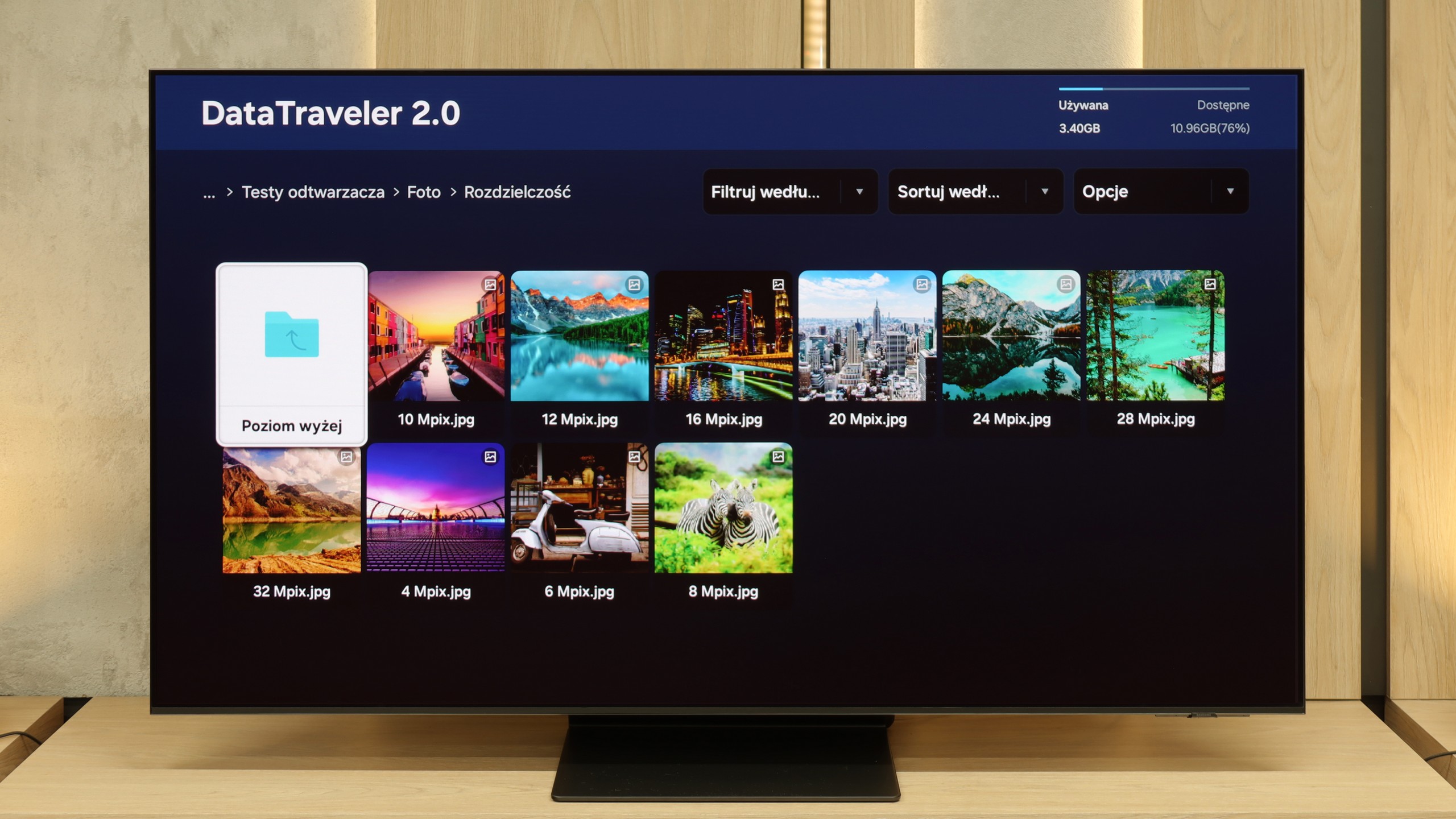
The Philips OLED909 features a built-in media player that handles most popular video, audio, and subtitle file formats with ease. However, it is worth noting that the pre-installed player does not support Polish characters in subtitles, which can be cumbersome when watching content from USB. Fortunately, with the Google TV system, this limitation can be easily bypassed. It is sufficient to download an alternative player from the wide range of available applications, which will provide full support for Polish characters and additional features, such as more advanced subtitle settings or support for less common formats. This means that even minor shortcomings in the factory software are not a major issue for users.
The built-in player in the S95F does a decent job – films and music start up without any problems, so it is completely sufficient for everyday use. The trouble begins only when we expect full compatibility with what the manufacturer claims. Not all image formats work, and HEIC files simply refuse to cooperate. However, for most people this will not be an obstacle – for basic applications, such a player performs flawlessly.
Apps
9.6/10
8.7/10














































Sound
8.1/10
8/10
- Subjective sound quality:8.1/108/10
- Dolby Digital Plus 7.1:
- Dolby True HD 7.1:
- Dolby Atmos in Dolby Digital Plus (JOC):
- Dolby Atmos in Dolby True HD:
- DTS:X in DTS-HD MA:
- DTS-HD Master Audio:
The Philips OLED909 stands out with its built-in soundbar featuring a navy fabric finish, branded by the renowned name Bowers & Wilkins. At the bottom of the screen, we find a solid speaker system, additionally supported by a built-in subwoofer at the back of the casing. The sound quality is truly impressive for the class of this device. The soundbar delivers clear and detailed audio that performs well with both dialogues and sound effects in films or games.
The built-in speakers of the S95F can be pleasantly surprising – they sound enjoyable and clear, and despite the slim design of the television, it’s hard to say that the sound is flat. Admittedly, the bass could be stronger, but that's a natural compromise given such a thin casing. For everyday watching of films or series, the set performs excellently. Those who prefer stronger experiences should consider a soundbar – preferably one with Q-Symphony support. Then, the television speakers and the Samsung soundbar work together.


